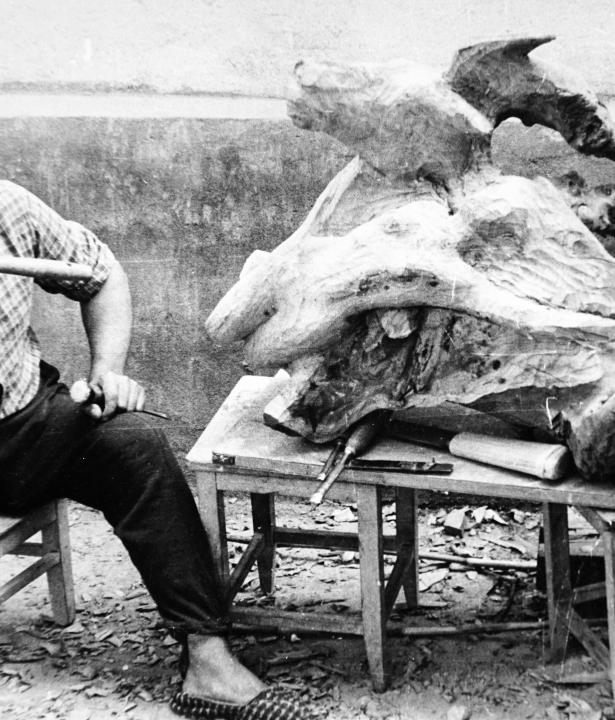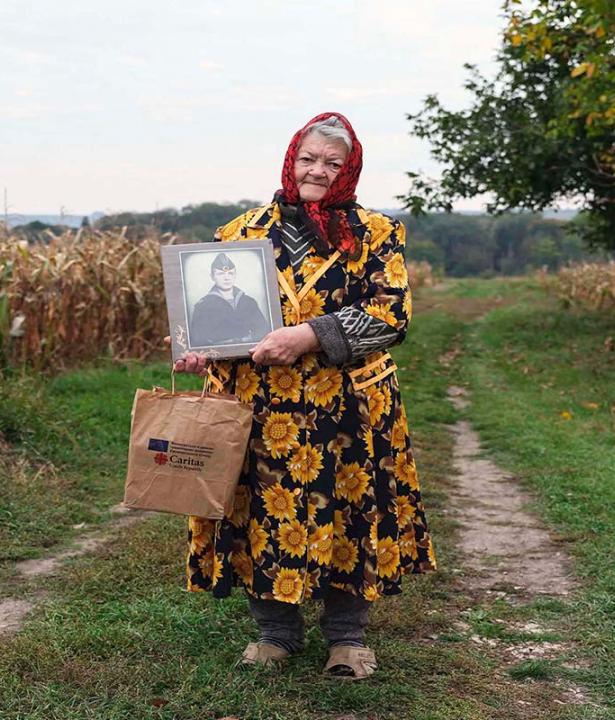Black Sea Germans experienced two dictatorships during the Second World War: In one they were persecuted as "enemies of the people", in the other they are considered as "members of the nation". In a joint exhibition, the Odessa Regional History Museum and the Museum for Russian-German Cultural History illuminate for the first time the experiences of the Black Sea Germans under both regimes.
Text
After the founding of the Soviet Union, Russian-Germans were discriminated against on the basis of their belonging to a number of societal groups. For example, starting in 1930, the state forced large-scale farmers, so-called "kulaks," to hand over their property to communal farms. In the Black Sea region, due to their history as peasant colonists, Germans represent only 2 percent of the population, but 15 percent of all
“kulaks“
“kulaks“
Kulak is a Russian-language term for a large-scale farmer, which had pejorative connotations in the Soviet Union but was never clearly defined. Many comparatively wealthy, or even just self-employed farmers were murdered or deported to penal camps under Stalinism as kulaks and thus "class enemies".
. If the peasants refused to give up their property, they were deported to labor camps. This expropriation led to a famine in 1932/1933, as a result of which, for example in the Black Sea German village of Kandel, 300 people – 16 percent of the villagers – starved to death .
Following Hitler’s seizure of power in 1933, German Soviet citizens as an ethnic group increasingly became the focus of Stalinist terror and were subjected to a particularly severe level of persecution as so-called "enemies of the people". The National Socialist ideology of an allegedly superior "Germanic race" led the Soviet government to perceive Russian-Germans as a danger. Starting in 1938, mainly Russian-Germans were deported to Siberia for forced labor. Between 1924 and 1939, about 90,000 Black Sea Germans died of starvation, were executed, exiled, or left their homeland voluntarily.
On June 22, 1941, Germany declared war on the Soviet Union. In the following weeks, on Hitler's orders, the German Wehrmacht advanced rapidly eastward. In response, Stalin ordered the deportation of Soviet citizens of German origin to the east of the USSR. Over 100,000 Black Sea Germans were transported to Siberia and Kazakhstan before the Wehrmacht arrived. After the Wehrmacht invaded Ukraine, however, the social position of the approximately 420,000 remaining Black Sea Germans was completely reversed. Recognized in Nazi ideology as "Volksgenossen" (comrades), they now belonged to the supposed "master race" and received preferential treatment: For example, the occupiers sought to protect them and their property, allowed them to practice religion, and promoted German schooling. In parallel, the SS established the so-called "Selbstschutz" ("self-protection") units in German villages, consisting of men of legal age, some of whom were integrated into the Nazi ranks and became perpetrators of genocide.
But already in 1943 the Wehrmacht had to withdraw from Ukraine. The fear of renewed repression drove the Black Sea Germans to hastily escape, leaving many behind the Wehrmacht lines and at the mercy of the Red Army. Some, however, managed to escape to the occupation zones of the Americans or the British. After the end of the war, the Allies decided to "repatriate" prisoners of war and civilians to the country in which they had resided before the start of the war. In the Soviet Union, however, they were threatened with deportation and penal servitude due to the general suspicion that they had supported the German Reich in the war. It was not until 1956 that Russian-Germans were allowed to leave their areas of exile – but they were still not allowed to return to their old homeland.
Following Hitler’s seizure of power in 1933, German Soviet citizens as an ethnic group increasingly became the focus of Stalinist terror and were subjected to a particularly severe level of persecution as so-called "enemies of the people". The National Socialist ideology of an allegedly superior "Germanic race" led the Soviet government to perceive Russian-Germans as a danger. Starting in 1938, mainly Russian-Germans were deported to Siberia for forced labor. Between 1924 and 1939, about 90,000 Black Sea Germans died of starvation, were executed, exiled, or left their homeland voluntarily.
On June 22, 1941, Germany declared war on the Soviet Union. In the following weeks, on Hitler's orders, the German Wehrmacht advanced rapidly eastward. In response, Stalin ordered the deportation of Soviet citizens of German origin to the east of the USSR. Over 100,000 Black Sea Germans were transported to Siberia and Kazakhstan before the Wehrmacht arrived. After the Wehrmacht invaded Ukraine, however, the social position of the approximately 420,000 remaining Black Sea Germans was completely reversed. Recognized in Nazi ideology as "Volksgenossen" (comrades), they now belonged to the supposed "master race" and received preferential treatment: For example, the occupiers sought to protect them and their property, allowed them to practice religion, and promoted German schooling. In parallel, the SS established the so-called "Selbstschutz" ("self-protection") units in German villages, consisting of men of legal age, some of whom were integrated into the Nazi ranks and became perpetrators of genocide.
But already in 1943 the Wehrmacht had to withdraw from Ukraine. The fear of renewed repression drove the Black Sea Germans to hastily escape, leaving many behind the Wehrmacht lines and at the mercy of the Red Army. Some, however, managed to escape to the occupation zones of the Americans or the British. After the end of the war, the Allies decided to "repatriate" prisoners of war and civilians to the country in which they had resided before the start of the war. In the Soviet Union, however, they were threatened with deportation and penal servitude due to the general suspicion that they had supported the German Reich in the war. It was not until 1956 that Russian-Germans were allowed to leave their areas of exile – but they were still not allowed to return to their old homeland.
Externe Links
External Image









